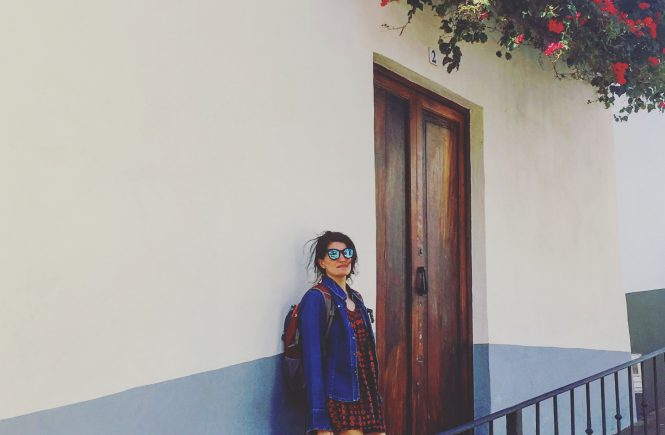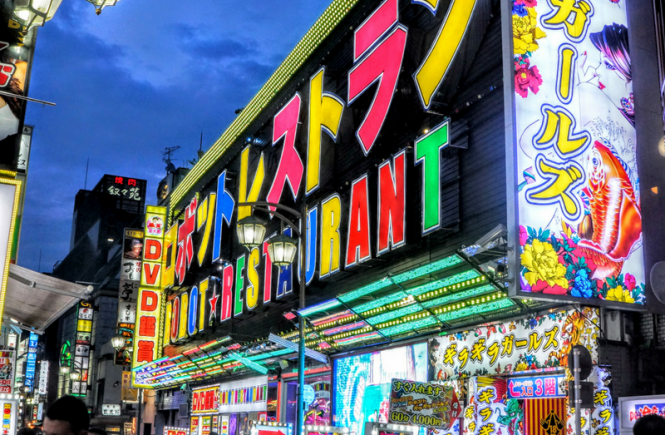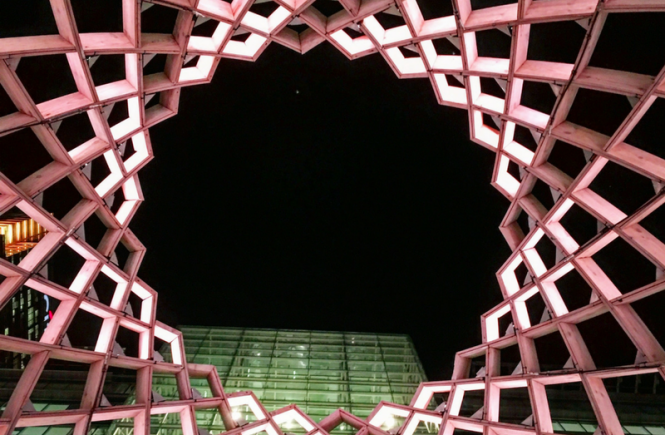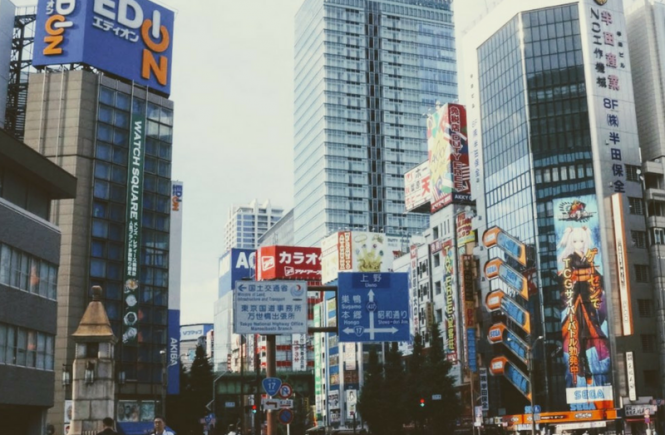
I was expecting Tenerife to be just another beautiful beach destination, packed with British tourists longing for warmth and sun. Well, it’s so much more than that. Mixture of beach with mountains, and a forest-meets-jungle kind of vibe, it has something to offer for everyone. Or better, everything to offer for everyone! In case you still don’t know, because of various geographic factors, Tenerife’s weather is pleasant all year round. This makes it a popular destination for those trying to escape Europe’s winter. The island, together with the rest of the Canaries, is part of Spain but it is actually closer to Africa than to Spain itself (it’s right beside it).
Where to stay in Tenerife
Before I dive into what to see and do, some word of advice. Tenerife has, because of a mountain range which divides the island, two climates in a very very short distance. The north is very humid and more likely to be cloudy and rainy. Think tropical: banana trees, palm trees, lots of green, views and landscapes to die for. Contrarily, the south of Tenerife is hot and dry, think arid climate and desert landscape, almost no rain.
In my opinion, you should rent a car, stay in the North and use your car to visit the South. The North is a lot more visually beautiful, hence this would force you to drive between enchanted forests, mountain ridges and literally through the clouds to get to the south. It is also quieter, as package tourists go to the south of the island where the Canarian culture is replaced by the British & German ones. This area is tailored to make them feel at home, so English pubs and English breakfast are common currency. This, among other things that are definitely out of place, are for me a bit of a downer. However, some of the best beaches are in the south, plus, it’s the most developed area so it also has some great restaurants. For example, this organic vegan friendly cafe blew my mind.
Now without further ado, see below some ideas of what to see and do. These should keep you busy for quite some time.
What to see and do in Tenerife

1. Parque Nacional El Teide
This famous National Park is named after the Teide, a 3,718-metre volcano which is the highest peak in the island and of Spain. Teide can be viewed almost from all over the island when driving. Although it’s definitely the park’s protagonist, this National Park has a lot more to offer! You could spend your entire holiday in Tenerife just on the park. It has numerous trails and multiple different landscapes which, because of the volcanic geography, makes you feel like you’ve taken a trip to Mars.
Getting to the top of the Teide is one of the most popular pursuits, as the views from such altitude in a clear day can definitely be rewarding! There are multiple options to get to the top, the easiest and quickest being a cable car which takes you almost to the top (3555 metres). From there, you can hike the Telesforo Bravo path for 30 mins and get to the actual peak. Do bear in mind you need a permit for this, as the number of people that can hike this last stretch is limited which you can get here for free but you must get it in advance as it books up fairly quickly.
For the more adventurous, you can avoid the cable car and walk instead taking the Montaña Blanca path. The trail is around 8.3 km and would take you 4-6 hrs up and 9-10 hrs in total (up and down). You can do this hike either early in the morning or late in the afternoon and stay in a refuge (refugio de Altavista) to then wake up to hike the last stretch just in time for dawn. There are other possible combinations, such as walking up and take the cable car down or vice versa which would take you 4-5 hrs instead. Another nice and shorter hike (2hrs) is the Roques Garcia walk, you can find the details here.

2. Barranco de Masca Hike & Los Gigantes
Although I greatly enjoyed the whole trip, I have to say this was my favorite experience in Tenerife. Masca is a tiny tiny city located in the Macizo de Teno mountains, at an altitude of 650m. The city and the drive to the city are charming but the interest is mostly in the hike which starts here.
The most popular version of the hike consists on hiking down to Masca Beach (around 3hrs hike) chilling there for a while and then taking a boat to Los Gigantes, a major Tenerife landmark consisting in huge cliffs which make a great view.
To achieve this, you can either drive to Masca, leave your car there and then after taking the boat, take a taxi (~23 EUR) from Los Gigantes to Masca. You could also take buses but buses are not at all frequent. There is no direct bus from Los Gigantes to Masca or vice versa, so you would have to take one from Los Gigantes to Santiago del Teide (city in the middle) and then one from there to Masca. Some people park their car in Santiago del Teide, then take a bus to Masca and then a bus from Los Gigantes to Santiago del Teide.
In my case I decided to hike the whole thing. It took us ~ 5/6 hrs in total with 2.5hrs down and 2.5/3hrs up with 0.5hrs in the beach. The hike is magical. This is due to a combination of amazing flora – palm trees, cactus with yellow flowers, bamboo and more – with the dramatic scenery of the massive gorge surrounding you at all times with different shapes and colors. Some extras include mini streams, ponds and geckos.
The hike is not physically straining specially if you only go down. What is not easy is that it’s quite rocky and sometimes requires going up or down large rocks which may be cumbersome for the unfit or elder hikers. The path is marked but it’s not super obvious. We derailed from it at some point and ended up walking up the edge of the gorge on what seemed to be a tunnel for a big pipe. This added a few minutes but was quite fun as it made us go through the mountain on a pitch black mini tunnel. We eventually got to the beach, which was lovely but nothing too crazy. Made of rock, it meant getting to the water was slightly uncomfortable. To me, the hike is really the thing, the beach is just the carrot to the horse!



3. Kayaking With Dolphins
A great vegan friendly excursion my boyfriend found on TripAdvisor, the reviews tempted us so we went for it! The excursion lasts about 3hrs 45 min. Dominique, a lovely frenchman, runs it and he takes you together with other kayaks to find dolphins!
We met Dominique and he took us to the shore where we got geared up and hopped on a two person kayak. We kayaked on the open sea to an area where dolphins usually come, and waited, kayaking around to find them. In our case, we saw them multiple times just swimming and jumping around. I loved it because it is absolutely natural, we didn’t bother the dolphins in any way. Of course, as the dolphins are free wild animals, seeing them is not guaranteed. There is also a nice cliff with a cove to explore close by. Then we kayaked back, got dressed, and went to a small bar for complimentary beers and snacks. You can book here, no payment needed in advance.

4. Beaches
Ok now that you’ve heard about Teide & Masca, time to introduce the islands beaches! These spread out across the island. I’ll include some of the best here and a brief summary so you know which ones to chose.
Playa Las Teresitas: golden Saharan sand, lots of space, beach kiosks, turquoise waters, palm trees… This plus Anaga mountain and a charming village in the backdrop make this beach many’s favorite.
Playa El Bollullo: an all natural beach with black sand and primitive facilities surrounded by banana plantations. It takes effort to get to it which make it not as popular which is a plus point. Two other pretty beaches sandwich it, so you might want to check them out as well.
Playa El Jardin: this beach has been landscaped with beautiful gardens, hence its name, “Garden beach”. You’ll find black sand and a resort but as locals also frequent this beach, it offers a nice mixed vibe. Plus it has Mount Teide kind of above it which makes a helluva view.
Playa del Duque: located in ‘upmarket’ Costa Adeje an area surrounded by luxury hotels, the beach is separated from them by a rocky hedge with a mock castle which adds to the luxury look & feel. Facilities are good and water is of a beautiful turquoise.
Playa El Médano: the cool kids beach of the island, frequented by surfers, windsurfers and kite-boarders – you guessed it – it’s windy. You’ll find golden sand and a relaxed local vibe, same as in the surrounding bars.
Playa La Tejita: another natural beach with beautiful golden sand, lots of space and a red mountain make it great to relax and work on your tan. The cove underneath the mountain is nudism friendly in case it’s your thing.
Playa Abades: this beach has a remote feel to it and if you are lucky, can be incredibly quiet which makes it very attractive for some. It also has an abandoned town nearby which adds interest specially and can make great photo material.

5. Garachico City
Garachico is a tranquil little town, located in a deep valley between slopes covered in tropical green flora. It is considered the prettiest and unluckiest city in Tenerife. It was once the most important harbour of the island but in 1706 the Montaña Negra volcano erupted in full force. Rivers of lava waved the harbour goodbye forever. But that wasn’t the only bad thing. Garachico went through other disasters over the years: disease, plagues of locusts, fire and flooding.
What doesn’t kill you makes you stronger, they say. The people of Garachico didn’t give up. They took care of the city and made it probably the best preserved city in the island today. What does this mean for you? Well, it means you can enjoy a nice stroll on the city’s squares, narrow cobblestone streets, admire the Canarian architecture, visit the San Miguel Castle and enjoy the sea view. While you are there, also have an ice cream in Fragola, it’s awesome! Also, Garachico is most famous because of the Garachico pools. These are natural pools of sea water formed by the lava of the 1706 eruption. These are just on the shore, you won’t miss them. They make a nice activity for a hot sunny day.


























